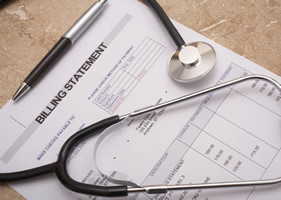Revenue Cycle Consulting
In our extensive experience with dialysis facility management, we have found that the most effective process for maximizing net revenues and minimizing days of outstanding AR is to have a well trained dialysis biller located at a location NEAR THE PATIENTS, preferably at the facility. This allows for ongoing monitoring of coverage issues, and for efficient follow up with the local and regional payors. The key is to have a well trained person in the role of your dialysis biller.
Note that each of these categories can also be structured as a stand alone project as well.
Billing Audits
Since the Prospective Payment System was implemented in 2011, there has been growing list of questions regarding how to optimize dialysis reimbursement and a need for a deeper understanding of how the various reimbursement adjusters work. HDS audits a representative sample of claims from a recent month. We gather all of the information including physician orders, patient record, compilation forms, charge entry forms, claim forms, and explanation of benefits forms to ascertain how to improve this flow of information and optimize reimbursement. We also investigate the new patient registration system to insure that the proper information is gathered in a timely manner.
Training a “Biller” or a “Dialysis Revenue Champion”
HDS can not only train your biller to carry out the billing function, but also create a REVENUE CHAMPION. The revenue stream is the lifeline of your business, and if AR gets out of control, life can get difficult in today’s operating environment.
HDS can provide ongoing support to your revenue champion in the form of updates to charge master and the latest changes in reimbursement rules and requirements.
Billing Policy and Procedure Manuals
HDS can provide a comprehensive billing policy and procedure manual tailored to your individual situation.
Expected Net Revenue (ENR) Identification and Benchmarking
In calculating profit margins, dialysis facilities should not use cash collections as their basis for stating revenues. They should use “expected net revenues” or ENR. ENR is calculated from the “bottom up”, on each month’s treatment and ancillary pharmacy utilization. Payor mix and payment rates by payor are included in this calculation. The result is ENR per treatment for a given time period which can then be compared to the costs necessary to provide the SAME TREATMENTS. In addition, the ENR provides a benchmark from which to measure actual “dollars collected”. In other words, are you collecting every dollar that you should be?
HDS brings an expected net revenue calculation tool that is based upon years of research and development to accomplish the goal of calculating an accurate ENR on an ongoing basis. These ENR data are then trended and summarized by quarter, semi-annually, and annually.





